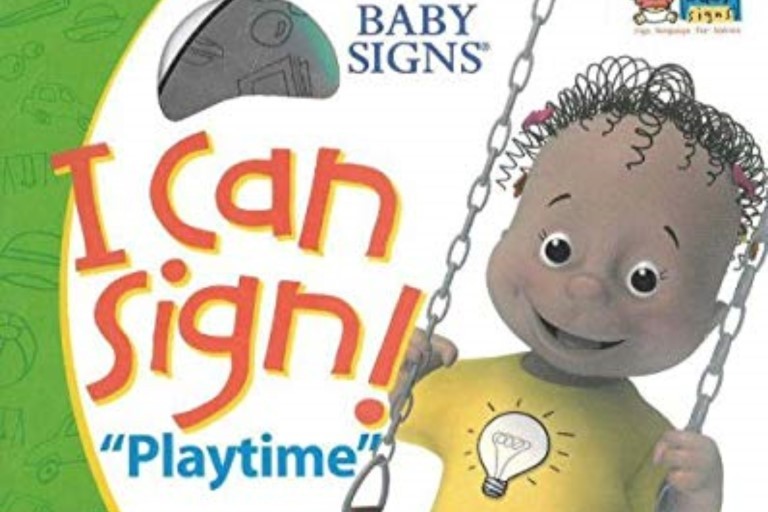
I Can Sign! Playtime
Dr. Linda Acredolo and Dr. Susan Goodwyn
The premise of this board book positions several characters wanting to play with a toy, book, or piece of clothing, and asks the reader to sign for that object, after which the reader sees the character playing with that object. The computer-generated illustrations in the book show the use of static signage. The accompanying DVD is helpful in instructing adults who don’t already know how to sign so they can lead young children in learning the signs as they read the book. Although no disability is portrayed in this book, it will appeal to toddlers’ ready engagement with learning to sign. Recommended for toddlers.
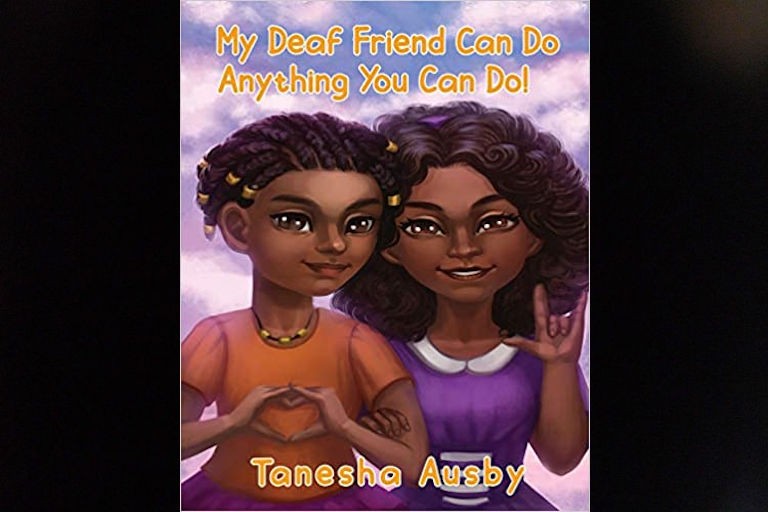
My Deaf Friend Can Do Anything You Can Do
Tanesha Ausbey
Marketing Summary: "My Deaf Friend Can Do Anything You Can Do is an African American children’s book for all ages that celebrates tolerance and acceptance. This story features a young deaf girl and her hearing friend who convey a tale about the misunderstandings of people who are deaf or hard of hearing. This book helps readers to clearly understand that deaf people can do the same tasks that others can do. In essence, My Deaf Friend Can Do Anything You Can Do helps to bridge the gap between the deaf and hearing community by giving a better, more accurate understanding of a deaf person’s life, abilities, and talents. Besides, this story also highlights aspects of bullying and promotes empathy for all. Throughout this book readers will notice different sign language signs as they read. This book encourages others to learn sign language and open their minds and hearts to the beauty of diversity!"
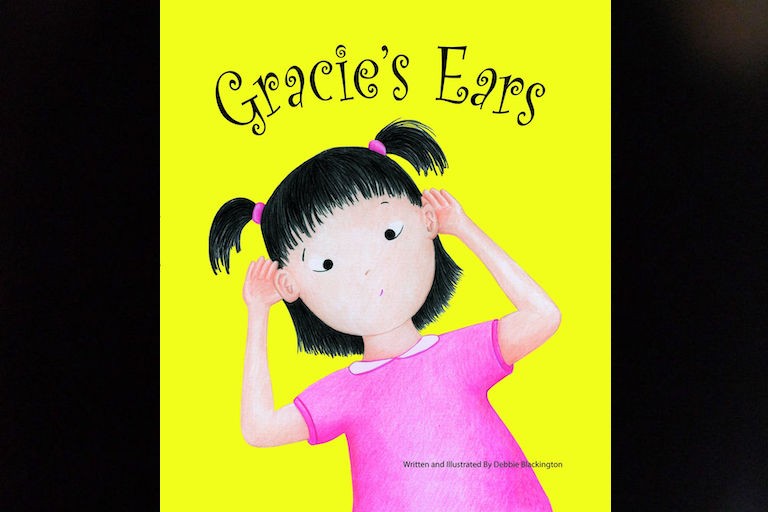
Gracie's Ears
Debbie Blackington
In this nicely illustrated book, the reader is introduced to Gracie, a little girl whose daily routine is like that of many children. The author describes that the only difference with Gracie is that her ears are asleep. The reader sees Gracie and her mother visiting several specialists who examine Gracie’s ears and ultimately fit Gracie with hearing aids. The author, who is the mother of the real-life Gracie, wrote and illustrated this book to teach children about hearings aids and their potential to help those with hearing impairments to hear. Although Gracie is never given a voice, the reader understands that the hearing aids have made Gracie very happy, now that she can hear sounds. While the book does not provide any information about hearing impairments or deafness, it is recommended for elementary-aged children as an introduction to the purpose of hearing aids.
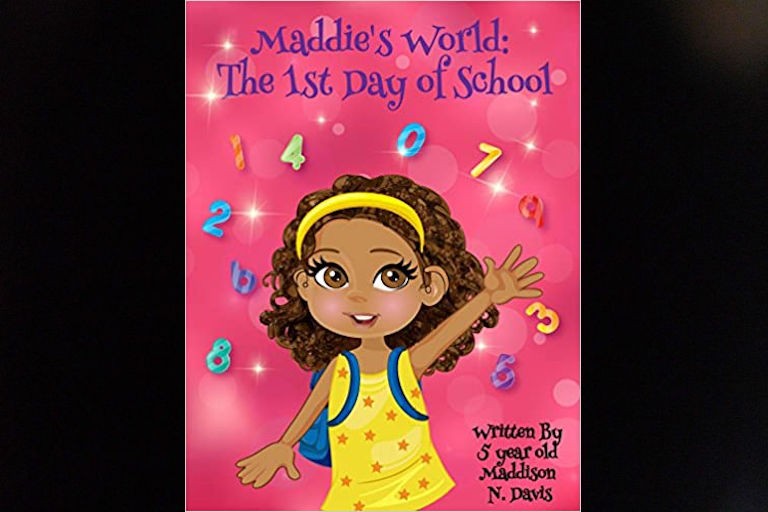
Maddie's World: The First Day of School
Maddison N. Davis
Five-year-old Maddie is excited about attending the first day of kindergarten. She’s also a little worried that her new teacher and classmates will make fun of the hearing aids that she wears. Prior to boarding the bus for school in the morning, Maddie comforts herself with prayer, affirmations, and her parents’ encouragement and reassurances that all will be well. At school, Maddie’s teacher reminds the multi-ethnic class that “we are all different and when we work together, we learn something new.” This book is filled with positive and uplifting messages about differences and commonalities regarding needs, talents, experiences, interests, appearances, and abilities. It has been written and autographed by the real-life Maddison who has conductive hearing loss and “wears 2 behind-the-ear hearing aids and uses an FM system [a wireless assistive hearing device] to help her hear while in and outside of school.” In the book, Maddie demonstrates important self-advocacy skills when she speaks up and explains her special hearing needs to her teacher and classmates. The book’s illustrations are colorful and eye catching; Maddie’s hearing aids and her teacher’s eyeglasses are rendered in a matter of fact manner. Developmental reading skills are supported by the incorporation of diegetic text throughout book. An explanation about the technical aspects of conductive hearing loss, hearing aids, and the FM system had been explained in the endnotes. Recommended for a variety of audiences, including children, parents, caregivers, teachers, and interested others.
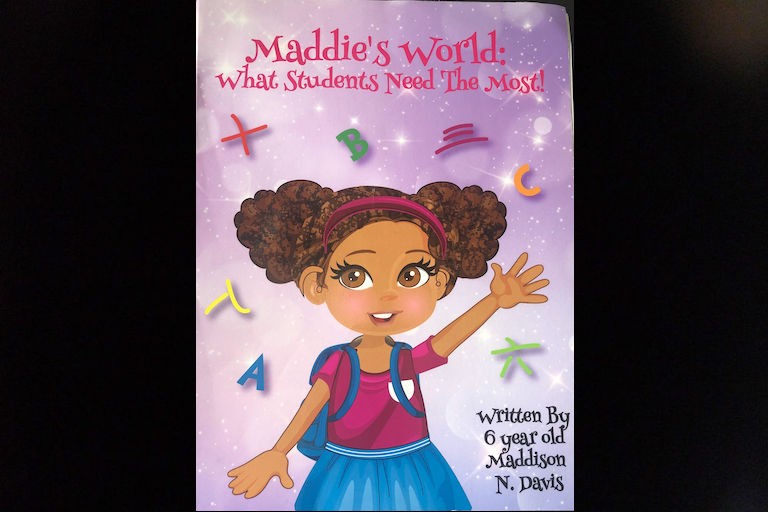
Maddie's World: What Students Need the Most!
Maddison N. Davis
In this sequel, Maddie is now six years old and learning English, math, science, and Mandarin Chinese in her multi-ethnic school. Her new language teacher supports Maddie’s special hearing needs and the inclusive learning needs of all the children in her classroom by using facial expressions, body language, and hand movements to immerse them in the Mandarin language and help them understand what she is saying. Maddie also is supported in school by her other teachers, the school nurse, and her parents and friends. Throughout the book, Maddie models strategies and positive thinking that will help her and other children who are “special in a different way” be successful in school (such as keep “eyes on the teacher, make sure to ask questions, and remember to try even if I’m afraid because I am smart and brave!”). The book ends with the idea that the most important language of all is the language of love. Literacy is reinforced throughout the book with illustrations of story characters engaged in reading, writing, and numbering in a school context. A glossary of words in English and Mandarin appears in the endnotes. As with the first book in the series, recommended for a variety of audiences, including children, parents, caregivers, teachers, and interested others.
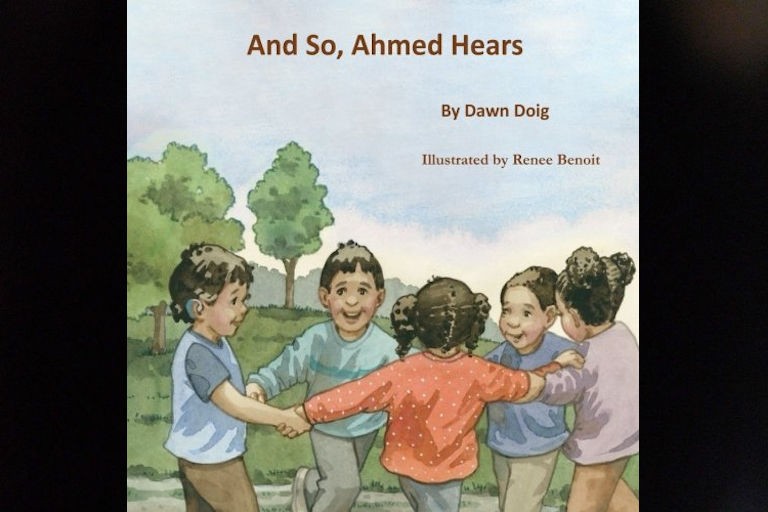
And So, Ahmed Hears
Dawn Doig
This book, written by a certified audiologist and educator, tells the story of Ahmed, a happy and active little boy “who’s not quite three” but never talks, laughs or sings. Concerned about her son’s silence, his mother takes him to a doctor who examines him and then refers the family to an audiologist. By means of various tests, the audiologist discovers that Ahmed is affected by hearing loss and fits him with hearing aids. Thereafter, Ahmed can hear all the wonderful sounds around him with the help of his hearing aids which are portrayed as necessary and positive tools. The illustrations in this book are sensitive and appealing, and Ahmed’s hearing aids are rendered well. In the endnotes, the author explains that she wrote Ahmed’s story “as a humanitarian project in order to improve public awareness of childhood hearing loss…and to help alleviate some of the stigma associated with it.” Yet, the book offers no explanation about how or why Ahmed lost his hearing (this is not always known) and no indication of options other than hearing aids (neither sign language nor Deaf culture are mentioned); it simply relates Ahmed’s individual story. That said, this book is recommended for parents, educators, interested others, and perhaps older children to understand hearing loss generally.
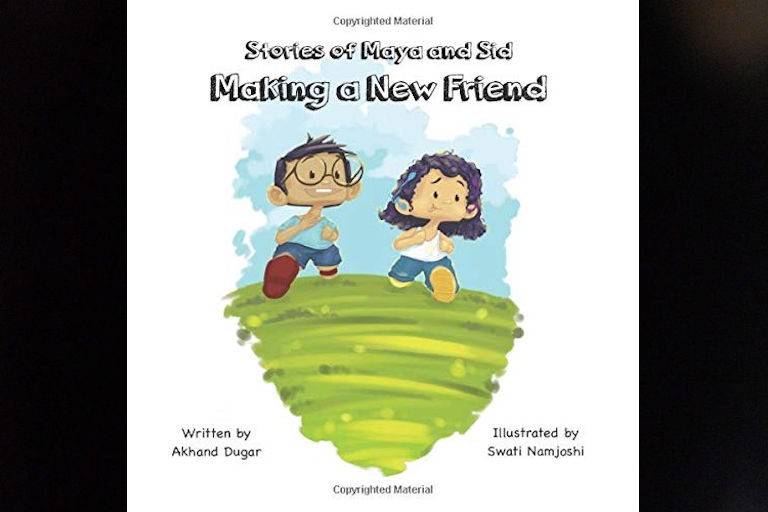
Making a New Friend (Stories of Maya and Sid)
Akhand Dugar
While playing together in the park, new friends Maya and Sid share information about each other. Maya tells Sid about the cochlear implant she wears to hear better, and Sid shows Maya the eyeglasses he wears to see better. The author addresses children’s natural curiosity about hearing and vision differences with child-friendly dialogue and illustrations. Endpapers offer useful information and resources about hearing loss and hearing technology. Highly recommended for parents, teachers, and professionals to share with children of any age.

Simone
Sonya B. P. Giridhar
Simone loves to learn and is a good listener and hard worker in school, but sometimes she has trouble hearing and understanding the words her teacher says in class. When her teacher says, “I stack 13 blocks,” Simone hears “I like stinky socks” instead. Simone expresses self-awareness, agency, and initiative as she solves her problem with an assistive listening device tool that improves her ability to hear her teacher’s voice loud and clear and ensures a positive classroom learning experience. Endnotes offer helpful and practical information about the use of assistive listening devices in the classroom and suggest strategies for children’s empowerment. This book is recommended for teachers, parents, and caregivers who want to gain an understanding of some of the issues faced by children with hearing challenges.
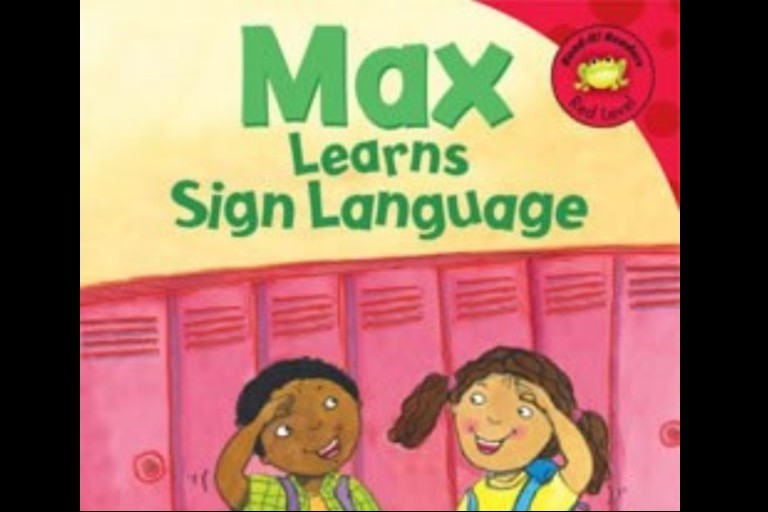
Max Learns Sign Language
Adria F. Klein
After meeting Susan, a Deaf classmate who uses sign language to communicate, Max decides to enroll in an after-school sign language class so that he can learn to communicate with her. Max’s teacher shows him how to sign many words and gives him a book with which to practice. The next time Max sees Susan, he makes the sign for friend and asks her if she’d like to ride her bike to the park with him. He and Susan become friends. This book introduces the concept of sign language to readers who may be unfamiliar with it but falls short of providing a complete explanation of hearing impairments, deafness, or Deaf culture to children. Illustrations are bright and colorful, but are inconsistent in their depiction of signs and the meanings of signs. This book is another in the series of “Read-It! Readers Red Level” which, according to the publisher, “presents familiar topics using common words and repeating sentence patterns.” Recommended with reservations for elementary and intermediate grade students who want to learn more about sign language. Teachers who want to use the book in their classrooms should plan to add supplementary material.

Lucia: alto y claro / Lucy: loud and clear
LAILA LAVAN
Presented in both Spanish and English, this is the story of Lucy, whose older brother, Omar, has borrowed her colored pencils for quite some time so she decides to ask Omar to give them back. Lucy talks with Omar, but Omar feigns confusion. We see both Lucy, who appears to be wearing a hearing aid, and Omar speak with symbols in speech bubbles. Omar smugly tells Lucy that she needs to be a better communicator because, even though she’s deaf and he knows its difficult for her to talk, he can’t understand her. He also tells Lucy that he can’t understand her when she’s “flapping her hands” at him because he doesn’t know sign language. Frustrated, Lucy uses a tuba to blow a loud sound at her Omar, asking if he now understands what she wants, which he does. The book’s colorful illustrations effectively show the characters’ emotions. What the reader learns about hearing impairment from this story is that Lucy, who is deaf, doesn’t communicate very well on her own, and is forced to find other means of making sound to appropriately convey her thoughts and feelings. Omar is clearly bullying Lucy, but the resolution is less than satisfying. Although a fun story, readers may see Lucy’s communication skills as a problem, which makes this book not recommended.
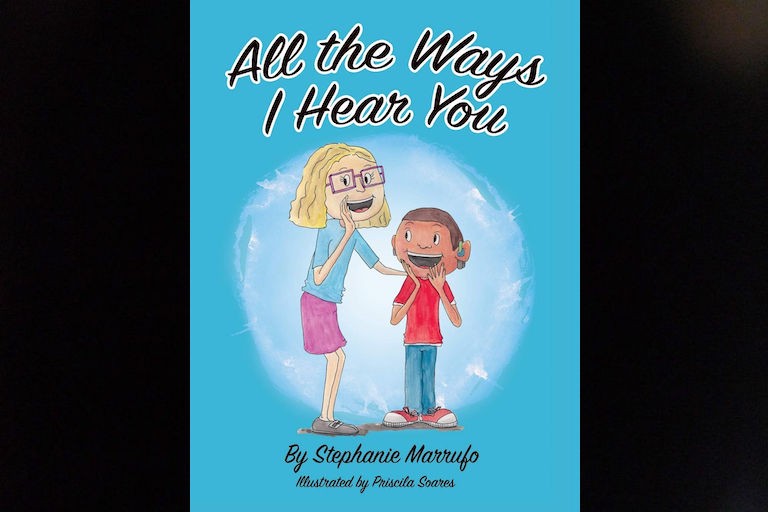
All the Ways I Hear You
Stephanie Marrufo
A boy describes the many different devices and technologies used to enhance hearing for children who have experienced deafness and hearing loss. Sign language and a variety of hearing aids, assistive listening devices, cochlear implants, electronic picture boards, microphones, among other communication and hearing performance and amplification systems, are realistically illustrated and modeled by a range of multiethnic children. The author provides a comprehensive glossary at the back of the book for readers who are interested in learning more about the science of the ear and hearing loss. Recommended for parents and teachers to share with children of all ages.
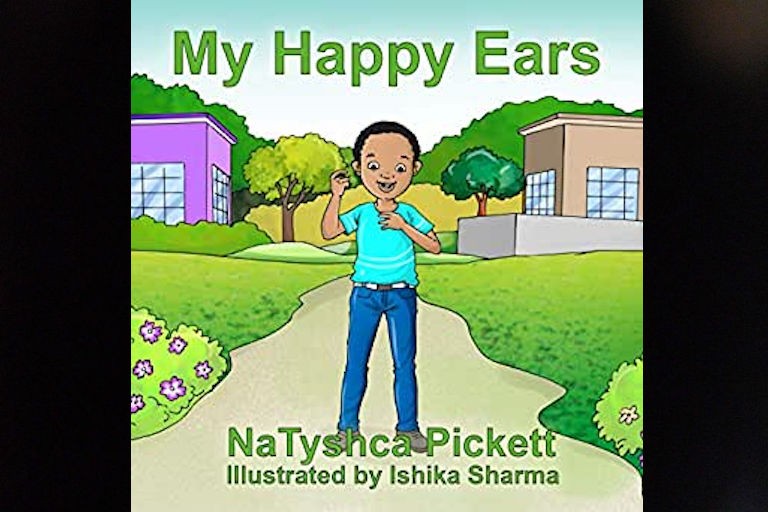
My Happy Ears
NaTyshca Pickett
Four-year-old Adrion was born with conductive hearing loss in both ears, making it difficult to hear what others are saying. When he doesn’t wear his hearing aids, he feels left out, but when he wears them, he feels happy because he can hear all the sounds around him. Colorful illustrations capture Adrion’s active life as a member of a loving and nurturing family and first day at a new school where other children also wear hearing aids and have happy ears. Highly recommended for its many uplifting messages.
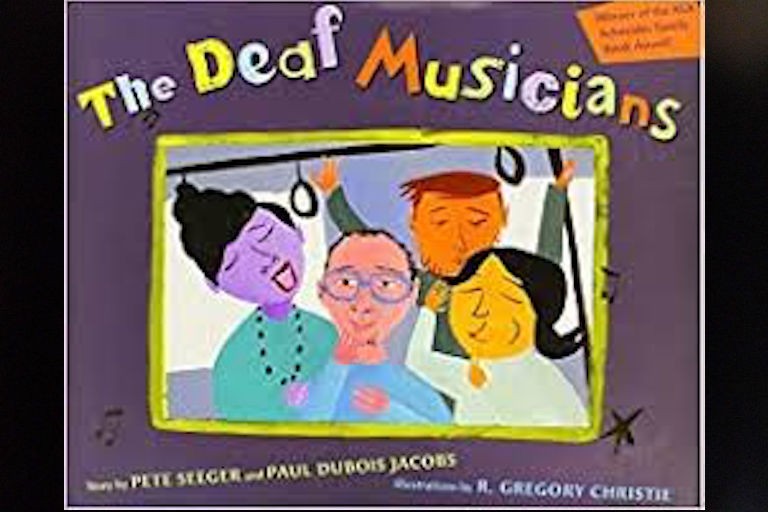
The Deaf Musicians
Pete Seeger and Paul Dubois Jacobs
Lee plays piano in a jazz band but when he begins to lose his ability to hear, he is fired from the band. He decides to attend a school for the deaf so that he might learn a new skill, but there he finds that he can use sign language with new friends to still make music. Using sign language and the help of a singer who can interpret their signs, Lee and his friends make music on the subway and eventually begin to draw crowds, leading Lee to perform music for more people now than ever. This story shows that Lee can continue to do what he loves despite being unable to rely on his traditional senses. Bright illustrations and frequent use of onomatopoeia make this a recommended read-aloud for elementary students.
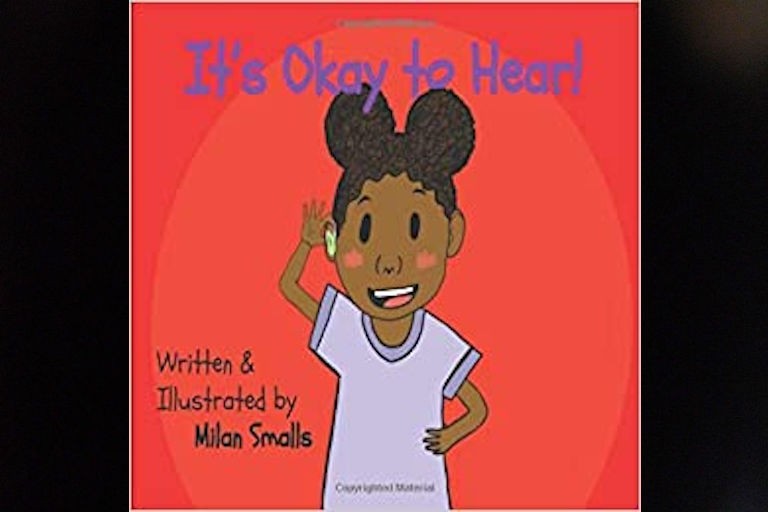
It's Okay to Hear
Milan Akira Smalls
Milan has trouble hearing her teacher and her friends at school. She’s very tired at the end of the school day because she spends so much energy trying to listen. Milan is bullied by her classmates, both physically and verbally because of her hearing impairment. One day, she’s sent to a hearing specialist who diagnoses Milan with having hearing loss and Milan receives a hearing aid. She goes from being bullied to being the coolest kid in school. She describes what frustrates her about her hearing aid, but also what it allows her to do, which includes getting good grades, making the lacrosse team, and allowing her to receive a scholarship to her dream school. While the author’s intent is clearly to help readers celebrate their own differences, this book may require larger conversations about physical and verbal bullying because of individual differences. Additionally, there are some narrative holes in the story. For example, Milan says of her hearing loss, “…when I found out that I could personalize it I felt so much better.” Readers may wish to know more about what it means to Milan to be able to personalize her hearing loss. Only recommended for comprehensive children's literature research based on the emic perspective of author.
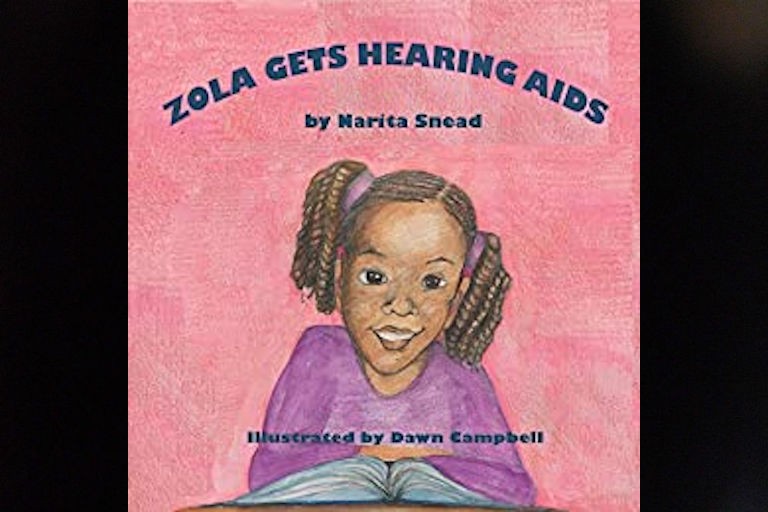
Zola Gets Hearing Aids
Narita Snead
Marketing Summary: "Zola has a problem. She does not hear as well as other kids. Today is the day she goes to the doctor, a special doctor, to check her hearing. Zola is worried because she has heard all about those kids who do not hear well. Her greatest fear is having to wear a hearing aid. She is worried about how her friends will react if she has to get a hearing aid and wear it to school. Will they tease her? Will she be bullied or will they accept her and still be her friend? Not sure about what the day will bring, with great sadness and frustration, she pushes back her blanket and gets out of the bed to go to the doctor’s office."
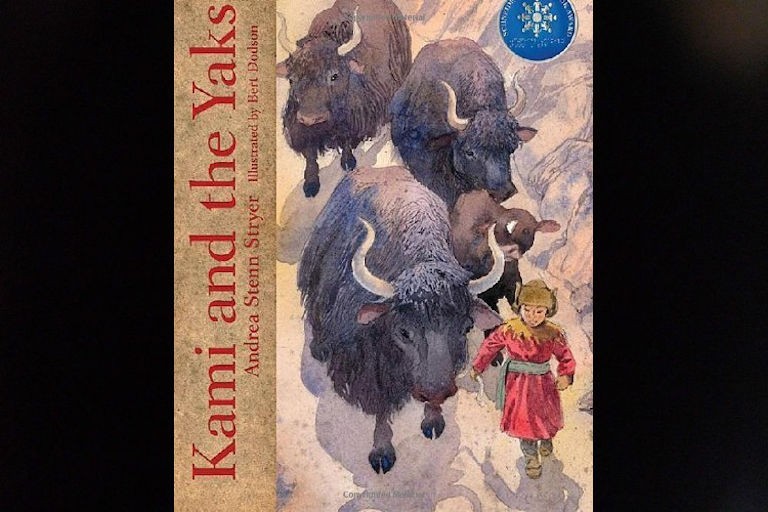
Kami and the Yaks
ANDREA STENN STRYER
Kami and his family are Sherpas who are preparing to lead hikers up a mountain when, during a brewing storm, they lose their yaks that will assist them in their hike. Kami, who is deaf, has a feeling that he knows where the yaks are and uses his whistle to help locate them. The reader learns how Kami’s non-hearing senses help him understand his environment and how he locates the missing yaks. Upon locating the yaks and seeing that one of them is in trouble, Kami returns to his family to let them know that they need help, but only his brother takes the time to watch as Kami tries to pantomime the problem. Once Kami’s brother and father understand the situation, they follow Kami to the yaks’ location and save the one who was in peril. With appreciation from his father, Kami leads the yaks home. The illustrations serve an important role in helping the reader understand what Kami is experiencing and how his senses compensate for his lack of hearing. The author includes a concluding supplement about Sherpas and their culture. Highly recommended for elementary-aged students.
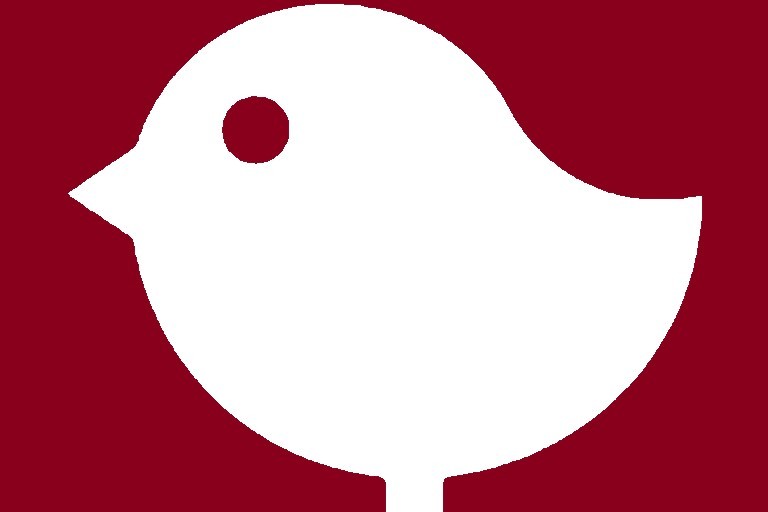
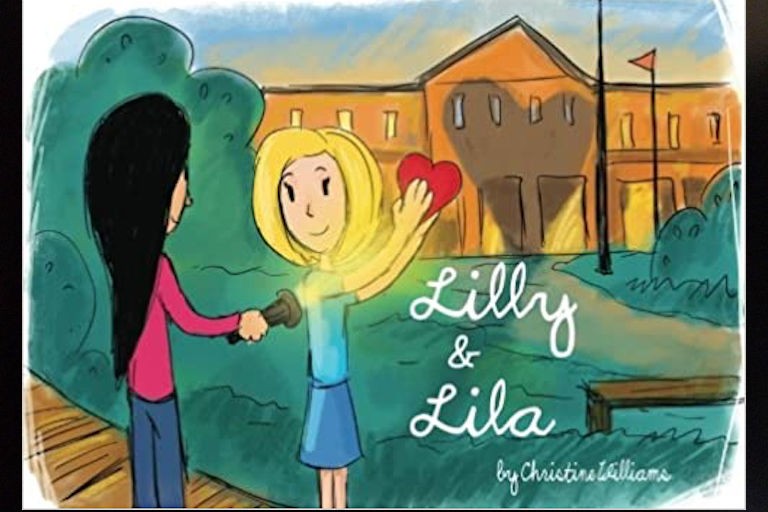
Lilly & Lila
Christine Williams
Marketing Summary: "Lilly and Lila are best friends who attend a special school for the deaf. Lila also has trouble seeing, especially in low light. When the other children are outside running around as the sun sets, Lila feels uneasy. Read about how these girls overcome their disabilities and find a way to engage their entire school in a game."
Location:
